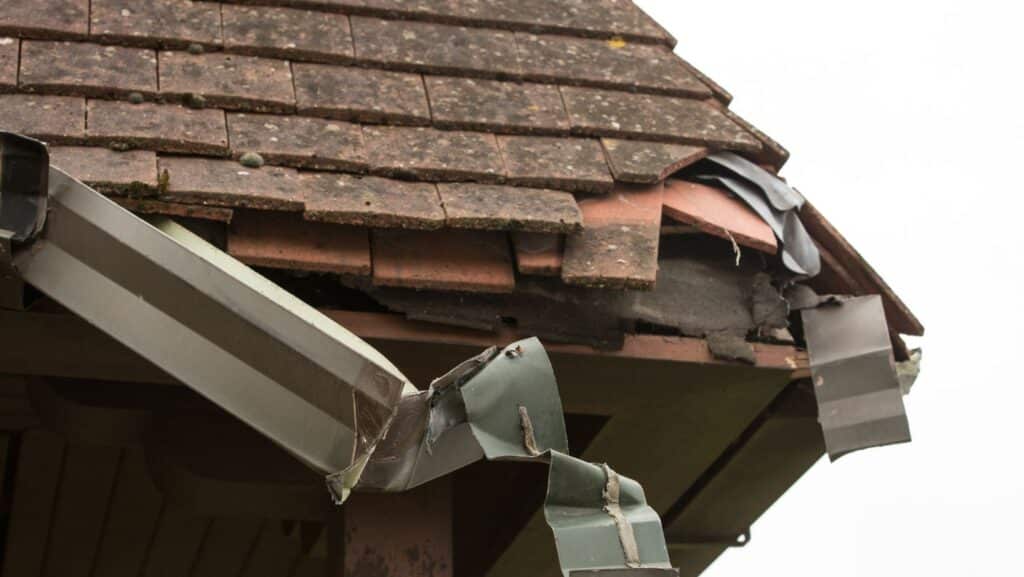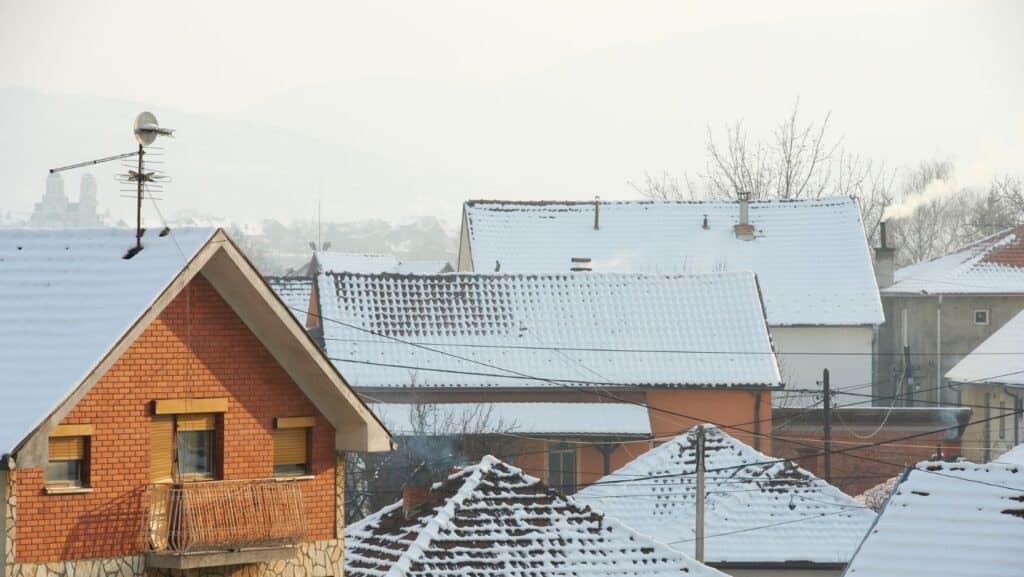Choosing the right roofing material for your home is a decision that goes beyond aesthetics and cost. The climate in your area plays a pivotal role in determining which roofing options will best protect your home, maintain its integrity, and enhance its energy efficiency over time. Different climates pose unique challenges to roofing systems, from the scorching heat of arid regions to the relentless moisture of coastal areas. Understanding how these climatic conditions affect roofing materials can guide homeowners in making an informed choice, ensuring their roof is both durable and appropriate for their environment.
The impact of climate on roofing materials cannot be overstated. In regions where extreme weather conditions prevail, selecting a roof that can withstand such challenges is crucial. This choice affects not only the longevity of the roof itself but also the comfort, safety, and energy costs of the home beneath it. As such, this blog post aims to explore the relationship between various climate types and the most suitable roofing materials for each, helping homeowners navigate the complexities of roofing selection in the context of their local weather patterns.
Understanding Climate Variations

Climate variations across different regions necessitate a tailored approach to selecting roofing materials. From the dry heat of desert landscapes to the icy conditions of the northern territories, each climate presents its own set of challenges. These climatic conditions influence not only the durability and performance of roofing materials but also their energy efficiency and maintenance requirements. Recognizing the specific needs and challenges of your climate zone is the first step toward choosing a roofing material that will offer the best protection and performance.
The concept of climate zones, established by building and energy codes, helps categorize regions based on their weather patterns. These zones guide homeowners and builders in making decisions that align with the local climate’s demands, ensuring that buildings are both energy-efficient and resilient. For instance, roofing materials in a coastal zone are selected for their ability to resist salt corrosion, while homes in snowy climates need roofs that can support heavy snow loads without compromising insulation. This strategic approach to material selection is fundamental to achieving a roofing solution that meets the unique demands of each climate.
Hot and Arid Climates
In hot and arid climates, the primary challenges for roofing systems include intense UV radiation, high temperatures, and thermal expansion. These conditions can degrade many materials quickly, reducing their lifespan and effectiveness. To combat these challenges, homeowners should consider roofing materials that reflect sunlight and emit heat instead of absorbing it. Clay tiles and light-colored metal roofing are excellent choices for such climates. Clay tiles, with their natural thermal resistance and air circulation features, keep homes cooler, while light-colored metal roofs reflect the sun’s rays, reducing heat absorption.
Furthermore, materials that can withstand thermal expansion and contraction without deteriorating are vital in these climates. Metal roofing, for example, not only reflects heat but is also durable and low maintenance, capable of withstanding the rigors of extreme temperatures without cracking or warping. Choosing a roofing material with these characteristics can significantly improve a home’s energy efficiency, reducing cooling costs and enhancing indoor comfort during the scorching summer months.
Cold and Snowy Climates
In cold and snowy climates, roofing materials must contend with freezing temperatures, ice dams, and the weight of accumulated snow. These conditions demand roofing solutions that provide excellent insulation, prevent ice dam formation, and are strong enough to support heavy snow loads. Asphalt shingles are a popular choice in these regions, thanks to their affordability and effectiveness in insulating homes. Additionally, slate roofing, with its natural durability and resistance to freezing temperatures, offers a long-lasting solution that can easily shed snow and ice.
The risk of ice dams, which can cause water to back up under shingles and lead to leaks, is a particular concern in these climates. Materials that facilitate the smooth shedding of snow and ice, combined with proper attic insulation and ventilation, can help prevent this issue. Moreover, the choice of dark-colored roofing materials can aid in melting snow more efficiently, reducing the load on the roof structure and minimizing the risk of damage.
Coastal and Humid Climates
Coastal and humid climates present a unique set of challenges for roofing materials, including salt corrosion, high winds, and moisture accumulation. In these environments, it’s crucial to select materials that can withstand the corrosive effects of salt air and resist mold and mildew growth. Metal roofing stands out as an excellent choice for coastal homes, offering superior resistance to salt corrosion and the ability to withstand high wind speeds. Additionally, treated wood shingles, designed to resist moisture and decay, can provide a natural aesthetic without succumbing to the damp conditions.
The relentless humidity and frequent storms common to coastal areas require roofing materials that are not only durable but also capable of promoting proper ventilation to prevent moisture buildup. Ventilation systems, along with materials that offer a tight seal against water intrusion, play a critical role in protecting homes from the damaging effects of moisture, ensuring the roof’s longevity and the home’s structural integrity.
Windy and Storm-Prone Areas
Homes in windy and storm-prone areas need roofing materials that can withstand high wind speeds and resist impact damage from flying debris. In these regions, the roofing material’s wind resistance is a critical factor in preventing damage and ensuring the safety of the home’s occupants. Asphalt shingles rated for high winds and impact-resistant materials like rubber roofing are among the top choices for homeowners in such areas. These materials are designed to stay intact and secure, even under severe weather conditions, providing reliable protection against the elements.
Selecting a roofing material with a proven track record of performance in storm-prone areas can significantly reduce the risk of damage and costly repairs following extreme weather events. Manufacturers often offer specialized products tailored to these needs, featuring enhanced adhesion properties and reinforced designs that ensure the roof remains a steadfast shield against wind and storms.
Energy Efficiency and Climate
The relationship between roofing materials and a home’s energy efficiency is particularly evident in extreme climates. The right roofing choice can help regulate indoor temperatures, reducing reliance on heating and cooling systems, and consequently, lowering energy bills. In hot climates, cool roofing materials designed to reflect more sunlight and absorb less heat can make a significant difference in keeping homes comfortable. Conversely, in colder regions, dark-colored roofing materials that absorb heat can help melt snow and ice on the roof, contributing to a warmer interior without excessive heating costs.
Energy-efficient roofing materials often come with additional benefits, such as rebates and tax credits, offering homeowners not only cost savings on energy bills but also incentives that offset the initial investment in a more sustainable roofing solution. By choosing materials that align with the energy demands of their climate, homeowners can enjoy a comfortable living environment while promoting environmental sustainability.
Longevity and Maintenance in Different Climates
The longevity and maintenance requirements of roofing materials are heavily influenced by the local climate. In areas with harsh weather conditions, materials that offer durability and low maintenance can provide homeowners with peace of mind and long-term savings. Regular inspections and maintenance routines tailored to the specific challenges of the climate can help extend the life of the roof, ensuring it continues to protect the home effectively.
For instance, in regions prone to heavy snowfall, ensuring that roofing materials are cleared of snow and ice can prevent structural damage and leaks. In coastal areas, routine checks for salt damage and corrosion can help identify issues before they become serious problems. By understanding the maintenance needs of their chosen roofing material in the context of their climate, homeowners can take proactive steps to preserve the roof’s condition and functionality.
Professional Consultation and Climate Considerations
Consulting with roofing professionals who have experience in your local climate is invaluable in making an informed roofing choice. These experts can provide insights into the best materials for your specific weather conditions, taking into account factors such as local building codes, insurance requirements, and the historical performance of materials in similar environments. A professional consultation can help homeowners navigate the complexities of roofing selection, ensuring that their choice not only meets their aesthetic and budgetary preferences but also stands up to the challenges of their climate.
In addition to providing expert advice, roofing professionals can assess the current condition of your roof, identify potential issues, and recommend solutions that consider both immediate needs and long-term performance. Leveraging their knowledge and expertise can help homeowners make decisions that enhance the safety, efficiency, and value of their home, tailored to the unique demands of their local climate.
The climate in your area plays a crucial role in determining the most suitable roofing material for your home. From the scorching heat of arid regions to the relentless moisture of coastal areas, each climate presents unique challenges that demand specific material properties for optimal performance. By understanding these climate-specific considerations and choosing materials that align with local weather patterns, homeowners can ensure their roof is equipped to provide long-lasting protection, energy efficiency, and comfort.
As you navigate the decision-making process for your roofing project, remember the importance of consulting with experienced professionals who can offer personalized advice and solutions. Advosy is here to help you explore the most appropriate roofing options for your climate, providing expert guidance and quality installation services that meet your needs and exceed your expectations. Contact us today to learn how we can assist you in selecting the perfect roofing material for your home, ensuring it stands strong against the elements and contributes to the overall well-being of your household.
Making an informed roofing choice in consideration of your local climate is not just about addressing immediate concerns; it’s about investing in the future comfort, safety, and resilience of your home. With the right materials and professional guidance, your roof can serve as a dependable shield against the weather, enhancing the livability and value of your home for years to come.


